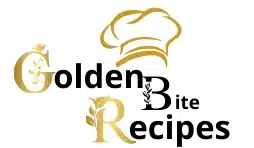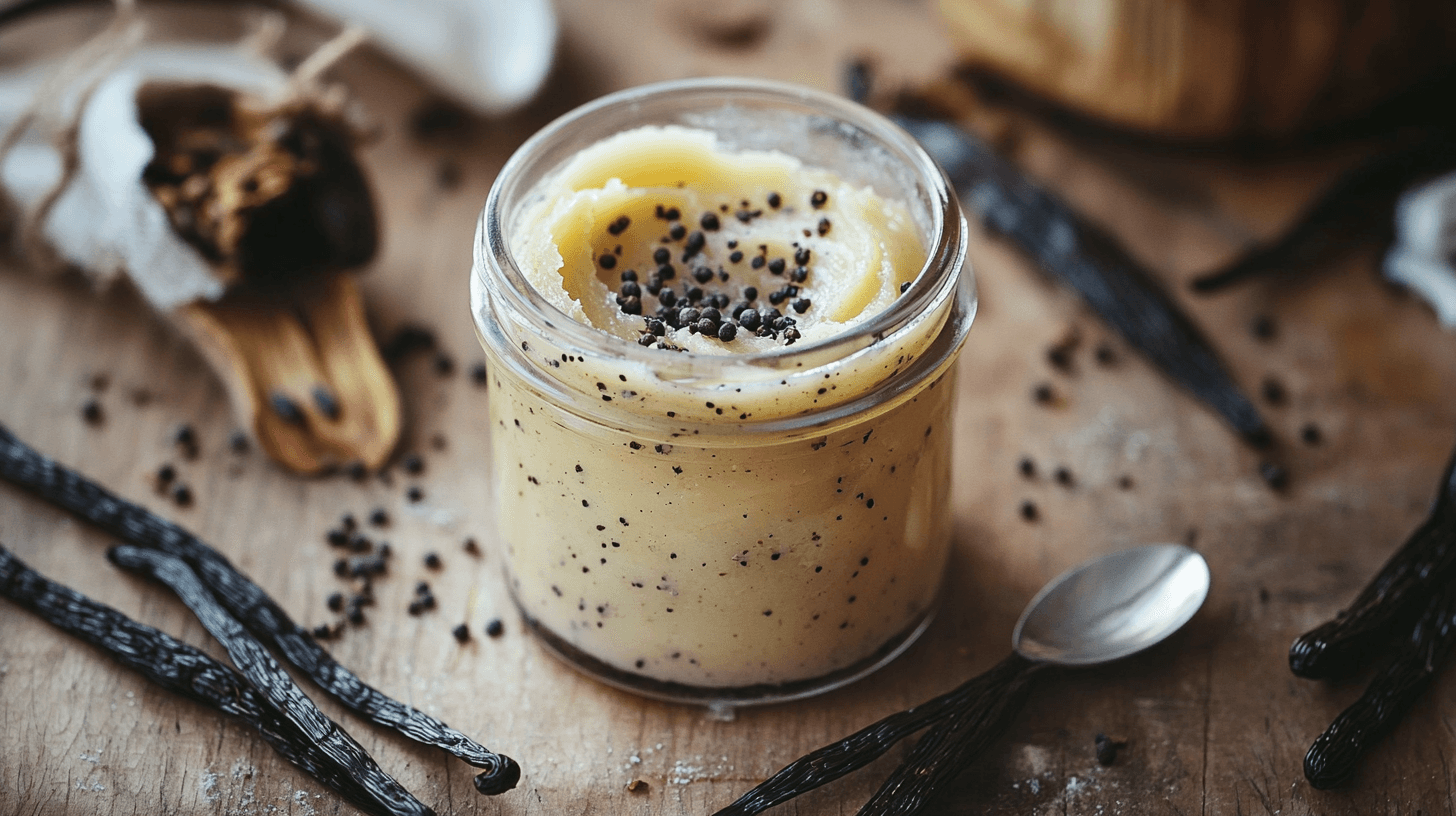Vanilla paste recipe – it’s one of those ingredients that can take a dish from ordinary to extraordinary. As a passionate baker, I can’t tell you how much I adore the deep, warm essence of vanilla. And when you make your own vanilla paste at home, it’s like unlocking a treasure chest of flavor. The fragrance that fills your kitchen while the paste comes together is nothing short of magical. Not to mention, the beautiful specks of vanilla beans that swirl through your treats? Pure perfection.
I remember the first time I used homemade vanilla paste in my cookies – they were transformed. The flavor was richer, the aroma more intense, and there was something so satisfying about knowing I made the paste myself. It wasn’t as difficult as I had imagined, and the result was well worth the effort. If you’re tired of overpaying for store-bought vanilla paste, or simply want to know how to make it from scratch, keep reading. I’m here to show you exactly how to create this delicious, versatile ingredient in your very own kitchen.
Table of Contents
Table of Contents
Vanilla Paste Recipe: How Vanilla Paste is Made
The Key Ingredients for Vanilla Paste
To create the perfect recipe, you’ll need a few simple ingredients: vanilla beans, vanilla extract, and a thickening agent like glycerin or corn syrup. The vanilla beans are the stars of the recipe, providing that rich, natural vanilla flavor and the beautiful specks of vanilla seeds that make the paste so special.
Step-by-Step Process for Making Vanilla Paste
The process of making vanilla paste starts with scraping the seeds from your vanilla beans. Once you’ve collected these precious seeds, they’re mixed with vanilla extract and thickened with a little glycerin or syrup. The consistency you’re aiming for is thick and smooth, perfect for adding to your baking and desserts. The result is a paste that is concentrated in flavor, so a little goes a long way in your recipes.
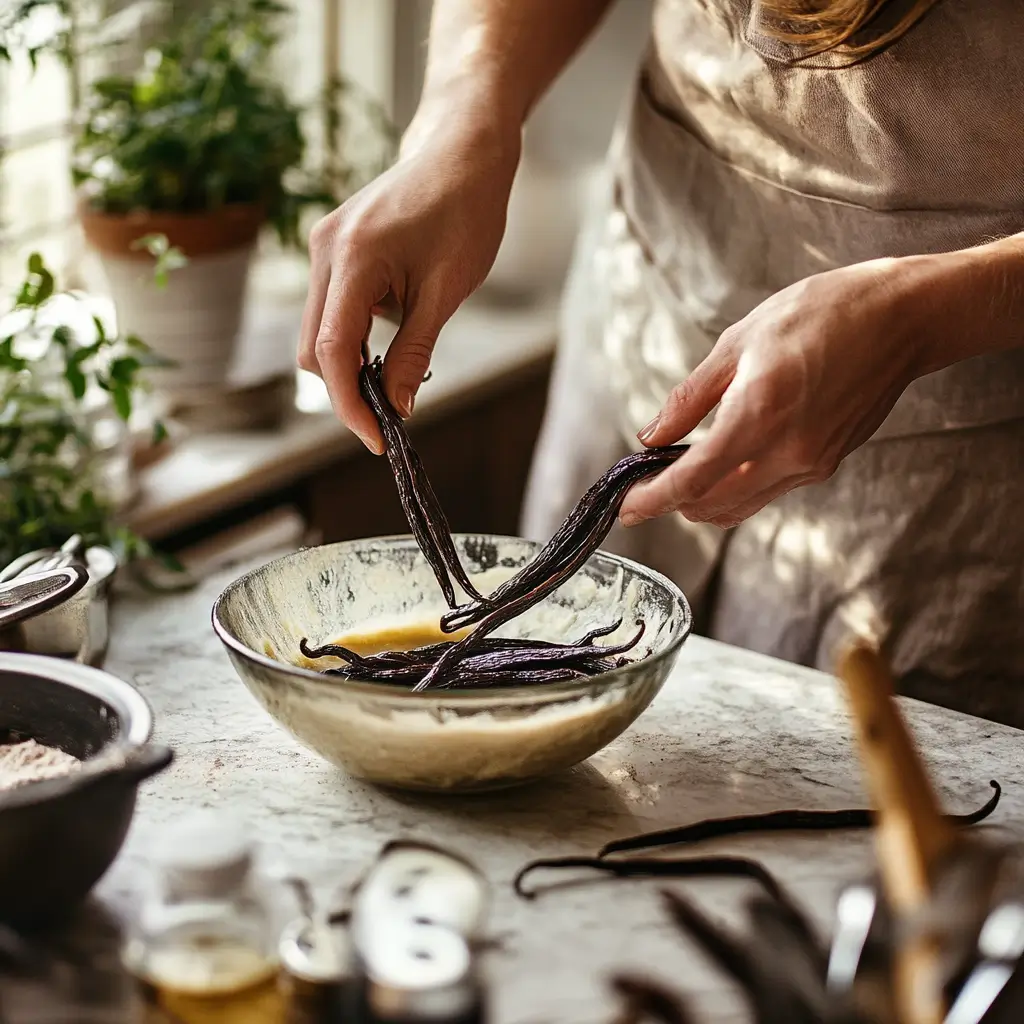
Why Make Vanilla Paste at Home?
Making your own vanilla paste allows you to control the flavor and thickness of the paste, ensuring it’s exactly how you like it. Plus, it’s a cost-effective way to enjoy the rich flavor of pure vanilla, without the high price tag of store-bought options. Homemade vanilla paste also avoids the additives and preservatives often found in commercial products, giving you a more natural, pure flavor to elevate your baking.
Vanilla Extract vs. Vanilla Paste – Which Is Stronger?
The Key Differences Between Vanilla Extract and Vanilla Paste Recipe
When you’re considering a vanilla paste recipe versus a vanilla extract recipe, it’s important to understand the differences. A vanilla paste uses both vanilla extract and the actual seeds from vanilla beans, which gives it a thicker, more concentrated flavor. The paste’s unique texture and powerful vanilla taste make it stand out in your baking. In contrast, vanilla extract is a liquid form of vanilla that’s typically less intense, though it’s still great for most baking needs.
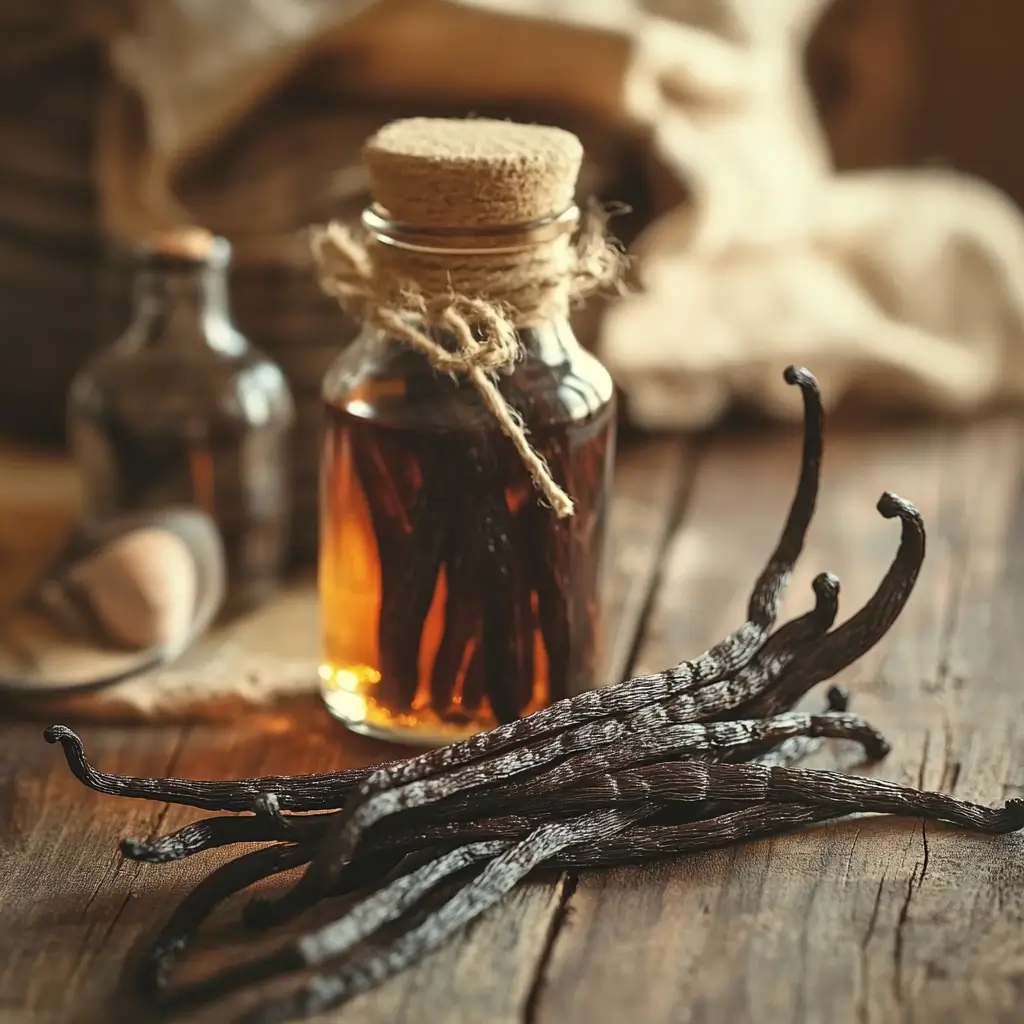
Which Is More Intense – Vanilla Paste or Extract?
For a more robust and aromatic flavor, a vanilla paste is the best choice. Thanks to the inclusion of real vanilla bean seeds, vanilla paste is much stronger than vanilla extract. This results in a richer vanilla flavor that’s perfect for recipes where you want the flavor to really shine through, such as in frostings, custards, or ice creams. While vanilla extract still provides a lovely flavor, vanilla paste delivers a more concentrated and visually appealing result with its vanilla bean specks.
Looking for more ways to incorporate vanilla paste recipe into your baking? Check out our Pinterest board for more creative ideas and inspiration.
How to Use Vanilla Paste for Maximum Flavor
Since a vanilla paste is more concentrated than using vanilla extract, you can use less of it to achieve the same intense flavor. For example, if a recipe calls for a teaspoon of vanilla extract, you can use half the amount of vanilla paste. This makes a vanilla paste recipe a great choice when you want to elevate your desserts with a deeper vanilla flavor without overwhelming the other ingredients.
What Can You Use Vanilla Paste For?
Versatility of Vanilla Paste in Baking
A vanilla paste recipe is incredibly versatile and can be used in a variety of baking and cooking projects. Whether you’re baking cakes, cookies, or making ice cream, vanilla paste is the perfect ingredient to add depth and intensity to your dishes. The natural vanilla seeds lend an extra layer of texture and visual appeal, making it especially great for recipes where the flavor of vanilla should shine, like vanilla bean ice cream, cupcakes, or puddings. The thicker consistency of vanilla paste also makes it ideal for frostings and glazes, where you want a bold vanilla flavor without the added liquid of vanilla extract.
If you’re in the mood for a unique treat, try adding your homemade vanilla paste recipe to chocolate syrup on yellow bread for a deliciously decadent dessert.
How to Use Vanilla Paste Recipe in Non-Baking Recipes
While vanilla paste recipe is often associated with baking, it can also be used in savory dishes. Add a spoonful of vanilla paste to sauces or marinades for meats like pork or chicken to add a surprising sweetness and complexity. It pairs beautifully with citrus fruits and can be used to flavor custards or whipped cream. The beauty of a vanilla paste recipe is its versatility; you can use it in both sweet and savory dishes to give your meals a luxurious vanilla flavor.
While vanilla paste is usually reserved for sweet dishes, it can even enhance savory meals like homemade mac and cheese by adding a touch of sweetness to the flavor profile.
Vanilla Paste Recipe for Homemade Confections
If you’re making homemade chocolates, candies, or even granola bars, a vanilla paste recipe is an excellent addition. The rich, aromatic flavor from the vanilla beans gives your confections a more sophisticated taste. It’s also perfect for flavoring homemade syrups or beverages, adding a natural sweetness without being overly sugary. For anyone who loves making their own treats, a vanilla paste recipe should be your go-to ingredient to elevate your creations.
For a richer flavor in your snacks, consider incorporating vanilla paste recipe into chocolate peanut butter oatmeal bars for a sweet and indulgent twist.
How to Store Homemade Vanilla Paste Recipe
Proper Storage of Vanilla Paste Recipe for Maximum Freshness
To ensure your homemade vanilla paste recipe stays fresh for months, proper storage is key. After making your vanilla paste, transfer it to an airtight glass jar or container. Make sure the container is sealed tightly to prevent air from getting in, as this can affect the paste’s freshness. Store your vanilla paste in a cool, dark place—away from direct sunlight and heat. A pantry or kitchen cabinet works perfectly for keeping your homemade vanilla paste at its best.
How Long Does Homemade Vanilla Paste Recipe Last?
A well-stored vanilla paste recipe can last for several months. If stored properly in an airtight container, it will retain its full flavor for about 6 months. For even longer shelf life, you can refrigerate your vanilla paste recipe. Just keep in mind that the paste will thicken slightly when cold, but it will still work just as well in your recipes. If you make large batches, you can also freeze portions of your vanilla paste in small containers to extend its shelf life.
Signs Your Vanilla Paste Recipe Has Gone Bad
Even with proper storage, vanilla paste recipe can eventually lose its potency. If you notice any off smells, discoloration, or mold growth, it’s time to discard your vanilla paste. Proper sealing and avoiding contamination are essential to keeping your vanilla paste fresh and safe to use. To keep track of freshness, it’s helpful to label your container with the date you made it.
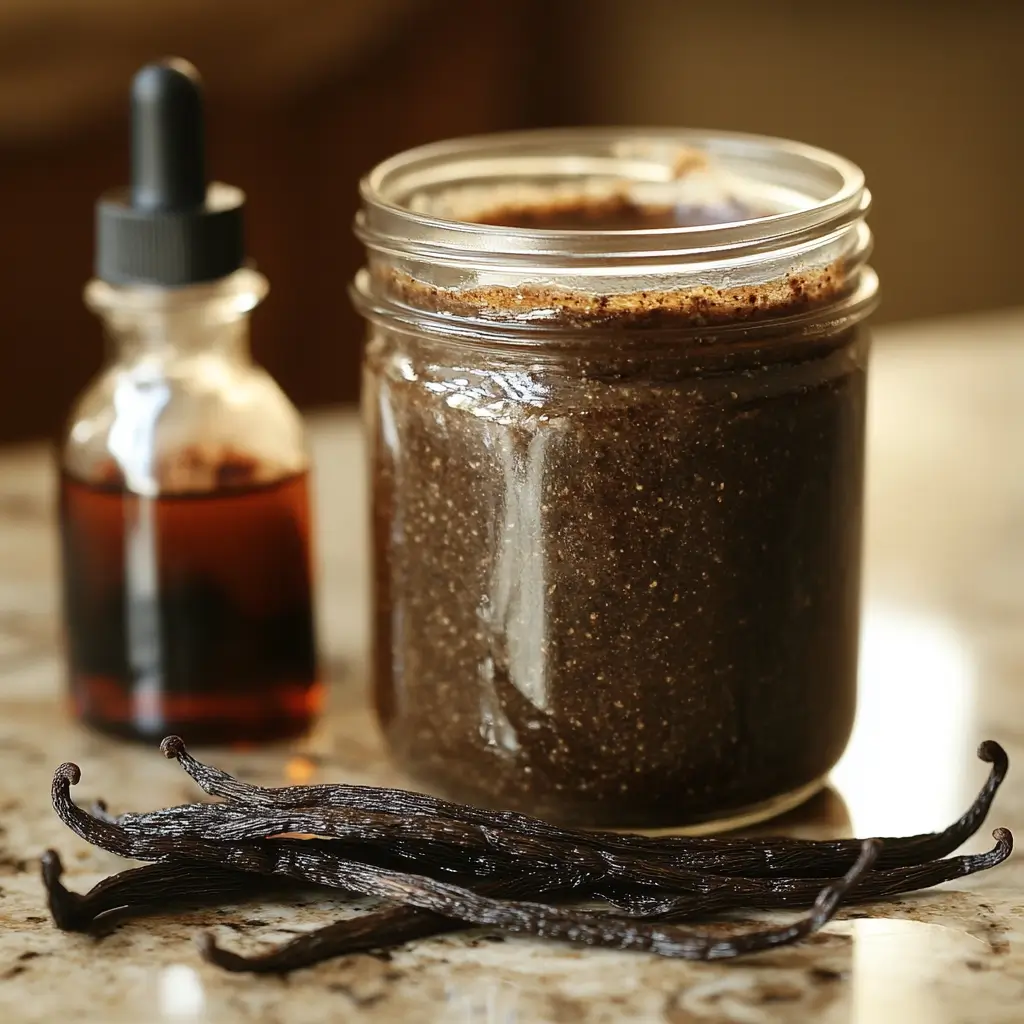
Why is Vanilla Paste Recipe So Expensive?
The Cost of Vanilla Beans in a Vanilla Paste Recipe
One of the main reasons vanilla paste recipe is so expensive is due to the high cost of vanilla beans. Vanilla is one of the most labor-intensive crops in the world, requiring a lot of time and care to grow. The vanilla beans themselves are harvested by hand, and the entire process of curing them can take months. As a result, the price of vanilla beans has skyrocketed in recent years, which directly impacts the price of vanilla paste. Since vanilla paste requires a significant amount of high-quality vanilla beans, it’s more expensive than vanilla extract, which uses only the essence of the bean.
The Production Process Behind Vanilla Paste Recipe
The process of making vanilla paste recipe is also part of what makes it costly. Not only do you need top-quality vanilla beans, but the production involves extracting the beans, combining them with vanilla extract, and thickening the mixture with a binding agent like glycerin or corn syrup. This takes time, effort, and specialized equipment, which further drives up the price. The labor and resources involved in creating a rich, high-quality vanilla paste recipe contribute to its higher cost compared to simpler extracts.
The High Demand for Vanilla Paste Recipe
In addition to the expense of vanilla beans and production, there’s a high demand for vanilla paste recipe among both professional bakers and home chefs. Its concentrated flavor and beautiful vanilla bean specks make it a highly sought-after ingredient in the culinary world, which only adds to the price. As people become more aware of the superior flavor and versatility of vanilla paste, the demand continues to increase, further driving up its cost.
How Much Vanilla Extract for Vanilla Paste Recipe?
Substituting Vanilla Extract in a Vanilla Paste Recipe
If you find yourself without vanilla paste and need a quick substitute, you can use vanilla extract. The general rule of thumb when swapping vanilla extract for vanilla paste is to use half the amount. So, for every teaspoon of vanilla paste recipe in your dish, use about 1/2 teaspoon of vanilla extract. Keep in mind that while this substitution works in terms of flavor, it won’t provide the same rich texture or the specks of vanilla seeds that make vanilla paste so special.
How to Adjust Your Recipe with Vanilla Extract
If you decide to substitute vanilla extract for vanilla paste, you may want to adjust your recipe slightly to compensate for the change in texture. Vanilla paste has a thicker consistency, which helps bind ingredients together, so you might need to reduce the amount of liquid in your recipe to account for the thinner consistency of vanilla extract. This is especially important in recipes like frostings, icings, or custards where the texture plays a role in the final product.
Why You Might Still Choose Vanilla Paste Recipe Over Extract
Despite the convenience of vanilla extract, many bakers still prefer to use a vanilla paste recipe because of its richer flavor and the delightful visual appeal of the vanilla bean seeds. The paste brings a deeper, more aromatic flavor profile to your dishes, which is especially noticeable in desserts like ice cream or crème brûlée. If you want to go the extra mile for the perfect dessert, using vanilla paste recipe is worth the effort for that extra burst of flavor.
You can also add vanilla paste recipe to lemon bars made with cake mix for an unexpected yet delightful twist that enhances the overall flavor.
Expert Tips for the Best Vanilla Paste Recipe
Choosing the Best Vanilla Beans for Vanilla Paste Recipe
The key to a perfect vanilla paste recipe starts with the quality of the vanilla beans. When selecting beans, look for plump, moist pods with a strong, sweet fragrance. The fresher the beans, the more intense and aromatic the flavor of your vanilla paste will be. Tahitian or Madagascar vanilla beans are popular choices, as they offer rich, sweet, and slightly floral flavors, making them perfect for creating a flavorful vanilla paste recipe.
Adjusting the Sweetness in Vanilla Paste Recipe
Not all vanilla paste recipes are created equal, and some may be sweeter than others. If you prefer a less sweet vanilla paste recipe, you can adjust the amount of glycerin or corn syrup used in the paste. Less sweetness will allow the natural vanilla flavor to shine through more intensely. Experiment with the sugar levels until you find the perfect balance for your taste buds, ensuring that the vanilla paste recipe complements your dishes without overpowering them.
How to Use Vanilla Paste Recipe in Small Batches
If you don’t need a large batch of vanilla paste recipe, consider making a smaller portion. Since vanilla beans can be expensive, making a small batch of vanilla paste will help you avoid wasting ingredients. Simply scale down the recipe by using fewer beans and adjusting the amount of vanilla extract and thickening agent accordingly. Homemade vanilla paste can last for months when stored correctly, but making smaller batches ensures that the flavor remains fresh and potent every time you use it.
Enjoy the Rich, Pure Flavor of Homemade Vanilla Paste Recipe
In conclusion, making your own vanilla paste recipe is an incredibly rewarding and flavorful experience. Not only do you get to enjoy the rich, natural essence of vanilla beans in your baking, but you also save money by making it at home. Whether you’re using it in cakes, cookies, ice creams, or even savory dishes, homemade vanilla paste will elevate your recipes to new heights. So, give it a try—your taste buds will thank you for it!
For more delicious recipes and helpful tips, don’t forget to follow us on our Facebook page for updates and inspiration.
